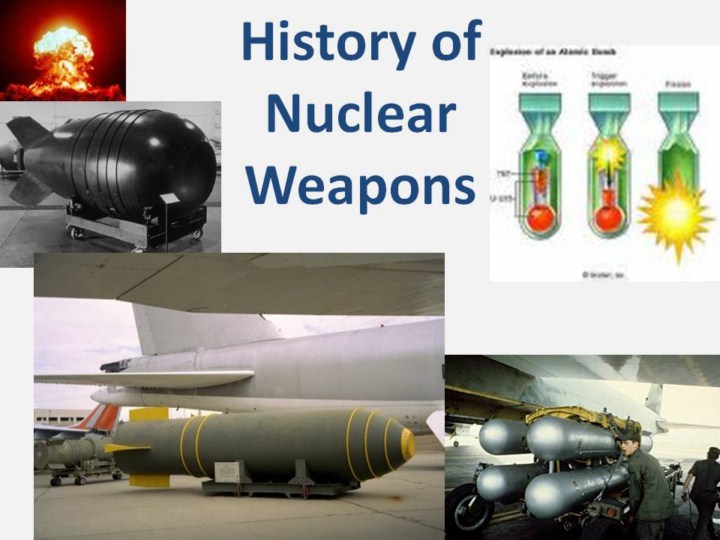| front |1 |2 |3 |4 |5 |6 |7 |8 |9 |10 |11 |12 |13 |14 |15 |16 |17 |18 |19 |20 |21 |22 |23 |24 |25 |26 |27 |28 |29 |30 |31 |32 |33 |34 |35 |36 |37 |38 |39 |40 |41 |42 |43 |44 |45 |46 |47 |48 |49 |50 |51 |52 |53 |54 |55|56 |review |
 |
The history of nuclear weapons chronicles the development of nuclear weapons. Nuclear weapons are devices that possess enormous destructive potential derived from nuclear fission or nuclear fusion reactions. Starting with the scientific breakthroughs of the 1930s which made their development possible, and continuing through the nuclear arms race and nuclear testing of the Cold War, the issues of proliferation and possible use for terrorism still remain in the early 21st century. The first fission weapons, also known as "atomic bombs," were developed jointly by the United States, Britain and Canada during World War II in what was called the Manhattan Project to counter the assumed Nazi German atomic bomb project. In August 1945 two were dropped on Japan ending the Pacific War. An international team was dispatched to help work on the project. The Soviet Union started development shortly thereafter with their own atomic bomb project, and not long after that both countries developed even more powerful fusion weapons called "hydrogen bombs." During the Cold War, the Soviet Union and United States each acquired nuclear weapons arsenals numbering in the thousands, placing many of them onto rockets which could hit targets anywhere in the world. Currently there are at least nine countries with functional nuclear weapons. A considerable amount of international negotiating has focused on the threat of nuclear warfare and the proliferation of nuclear weapons to new nations or groups. There have been (at least) four major false alarms, the most recent in 1995, that resulted in the activation of either the US's or Russia's nuclear attack early warning protocols.
|